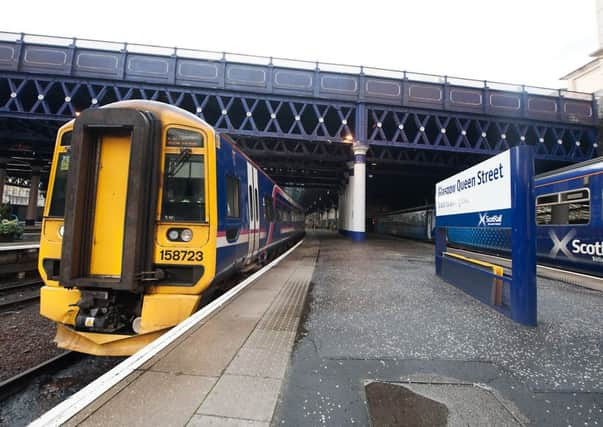Alastair Dalton: Queen Street revamp will be trying for all


It could make for unprecedented levels of upheaval on the Scottish rail network, in which the Glasgow station – the country’s third busiest with 20 million passengers a year – is a key part.
Trains currently spread over nine platforms will be squeezed into two from 20 March to 8 August, albeit with a few long-distance routes diverted to Glasgow Central.
Advertisement
Hide AdAdvertisement
Hide AdTo make the passenger choreography even trickier, the platforms remaining in use are down flights of stairs, with no escalator and one lift each.
Travellers used to strolling on to the main concourse to board trains to places like Edinburgh, Stirling and Fort William face having to join a queue before being allowed down on to the platform just in time for their departure.
But no-one will escape – those already using the low-level platforms for destinations like Bathgate, Helensburgh and Milngavie, will also have to queue.
The complex arrangements will involve separate queuing systems on each side of the station, using the stairs at each end of the lower platforms.
I’m told that, in most cases, folk heading east will queue under the Dundas Street canopy at the east end of the station, while those going west will have to stand in line in a marquee at the west end, at North Hanover Street.
A one-way system will also operate on each platform, with arriving and departing passengers using separate staircases to minimise congestion.
Now, it’s true that ScotRail has long experience of operating station queuing systems, such as for major concerts and sporting events, including the Commonwealth Games in Glasgow in 2014.
Advertisement
Hide AdAdvertisement
Hide AdHowever, Queen Street looks like being an entirely different dance routine. Previous queuing has largely been for passengers all going to the same destination. This time, each train will be going to a different place, and time will be of the essence in getting everyone on and off speedily to prevent delaying the next one.
During the Commonwealth Games, ScotRail may have carried huge numbers of spectators, but the influx led to many trains running late.
That was over ten days during the summer holidays. Queen Street will last for 20 weeks.
The other thing that some passengers may not have grasped is that the disruption is because of work to replace worn-out tracks in the main access tunnel – not the re-development of the station, which will follow next year.
This will involve extending three of the platforms to accommodate new, longer electric trains, and building a new glass frontage on to George Square by demolishing part of the Millennium Hotel and an adjacent office block.
However, Network Rail is taking advantage of the tunnel closure to do some of the lengthening work at the same time, which will then be temporarily covered over until the rest of the project gets under way. The track firm plans to complete the rest of the scheme while keeping the station open, like it did during the £25 million overhaul of Haymarket Station in 2013.
It’s going to be a long haul, and the biggest test for the ScotRail-Network Rail Alliance yet. They just need to remember who all of this is being done for – the passenger.